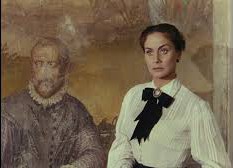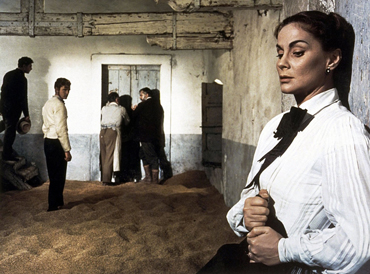“Smog,” is a film directed by Franco Rossi, released in 1962. It is also the title of a favorite Italo Calvino story, published in 1958. They have some things in common, besides air pollution. The story is easily found in English, while the film, just recently restored, is mostly to be seen in awful quality prints with sometimes jarringly loud audio.
The film narrates the adventures of a rather non-descript Italian lawyer who gets to adventure into Los Angeles during a layover on his way to Mexico City where he is to assist in a celebrity divorce case. As the story goes on, we find him to be a rather superficial character, accepting of conventional wisdom about the Italian “Economic Miracle,” appalled and amazed at the formlessness of L.A. (“All the Italians try to walk, to find a cafe,” he is told by a fellow expat), content to follow his domestic path to success and status through the marriage to his upper-class fiance. He meets various Italians, at first by chance, all hustling like mad to pluck some low-hanging fruit from the golden orchard of America, and the film progresses through a series of parties and get-togethers, reminiscent of “La Dolce Vita.” Through the city’s smog – pretty awful in those days – he is introduced to some major mid-century modern architectural landmarks, e.g. the pavilion and transit tunnel at the airport, the glass Stahl house overlooking the city from the Hollywood Hills, and the Triponent dome house. I felt nostalgic for my childhood while watching these images.
It seemed to some to be an anti-American movie, but it certainly is just as much an indictment of Italians, and their embrace of superficial materialism, and pointless running around as a way of life. As an historical set-piece of L.A., it is remarkable. The city has changed enormously since then – it is now one of the most densely settled in the USA, and no longer the futuristic dream/drosscape depicted here. For the lawyer, there is no redemptive grace in the end, only loneliness among the inhumane architecture.
Calvino’s story has some of the same tone as Rossi’s film. A disaffected young journalist takes a nothing job with an industrialist in an unnamed north Italian city blanketed by smog. He too is a child of the Economic Miracle, and not enjoying it all that much. He accepts, but is wrankled by the hypocrisy of his position, toadying to his tycoon boss who eggs him on to create literary gems for the house organ, “Purification.”
The problem of industrial smog. ”Will we solve it? We are solving it.“ Of course, it’s all hooey.
The journalist has an ongoing affair with a very rich jet setter who is attracted to him for some reason that neither we nor he understands: perhaps his mediocrity is more real to her than her everyday charmed life. For him, she exists in an ideal beautiful world, inaccessible to him in his grubby working grind, in a city in which everything is covered with grime and soot as soon as it comes to rest. She, however, somehow never seems to become soiled by it when she visits him.
The story recalls a vignette by Calvino from “Invisible Cities,” about the town of Leonia, where everybody uses everything only once, discarding it in massive piles of trash each morning to be picked up by heroic garbage men who are applauded the way we praised hospital workers from our balconies during the COVID pandemic. The people of Leonia seek redemption by ceaselessly discarding the material “skin” of their daily existence, reborn daily as the snake is reborn when it gets a new hide. In “Smog”, the hero achieves some grace in the end when he takes a bus to the countryside where, in a small town, he sees a vista of drying laundry, fresh, clean, unsoiled, bright in the sunlight.
Smog in both Rossi’s film and Calvino’s story is an enveloping environment, the World, circumstances and history, from which no one can escape. It is the stuff of life, our inferno, also described in “Invisible Cities.”
The inferno of the living is not something that will be; if there is one, it is what is already here, the inferno where we live every day, that we form by being together. There are two ways to escape suffering it. The first is easy for many: accept the inferno and become such a part of it that you can no longer see it. The second is risky and demands constant vigilance and apprehension: seek and learn to recognize who and what, in the midst of the inferno, are not inferno, then make them endure, give them space.





 Posted by Lichanos
Posted by Lichanos 
























